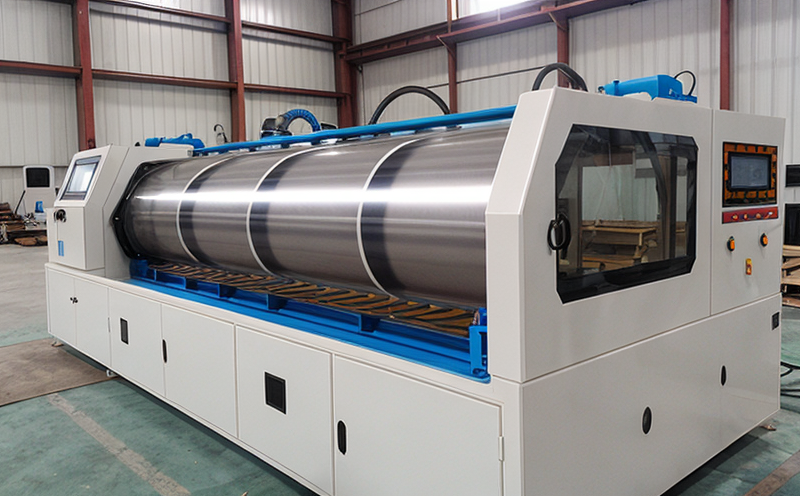AATCC 200 Performance testing of coated fabric finishes
The AATCC Test Method 200 is a comprehensive set of procedures designed to evaluate the performance characteristics of coated fabrics. This includes assessing durability, resistance to chemical and physical stresses, and overall integrity under various environmental conditions. The test encompasses a range of parameters such as abrasion resistance, water repellency, stain resistance, and more.
This testing protocol is particularly crucial for industries that rely on durable, high-performance textiles. For instance, outdoor gear manufacturers depend heavily on this type of fabric to ensure the longevity and reliability of their products in harsh conditions. Similarly, automotive upholstery companies need fabrics that can withstand the rigors of daily use without compromising on comfort or aesthetics.
The AATCC 200 test covers a broad spectrum of coated finishes that are commonly used across different sectors:
- Water-based coatings
- Solvent-based coatings
- Eco-friendly and biodegradable coatings
- Flame retardant coatings
The testing process involves rigorous specimen preparation, where the fabric is cut into specific sizes to ensure accurate measurement of performance parameters. The test can be conducted under various conditions such as high humidity, temperature fluctuations, and exposure to chemicals.
One of the key aspects of this test is the use of advanced instrumentation that simulates real-world conditions. For instance, abrasion resistance tests may involve using a rotary biaxial sanding machine, while water repellency is tested through an apparatus that applies varying amounts of water pressure and duration.
The acceptance criteria for AATCC 200 are stringent, ensuring that the coated fabric meets or exceeds industry standards. Compliance with these criteria not only enhances product quality but also ensures customer satisfaction and brand reputation.
Quality managers and compliance officers can benefit significantly from this testing method as it provides a clear roadmap to ensure products meet regulatory requirements and exceed expectations in terms of performance. R&D engineers find this test invaluable for optimizing fabric formulations and improving product durability.
Industry Applications
| Industry Sector | Application |
|---|---|
| Agriculture | Evaluating the durability of agricultural fabrics under various environmental conditions. |
| Automotive | Determining the resistance of upholstery and other interior components to wear and tear. |
| Construction | Assessing the performance of roofing membranes and waterproofing materials in harsh weather conditions.|
| Military | Evaluating the effectiveness of camouflage fabrics under different climate and environmental stressors. |
| Sportswear | Ensuring that athletic wear remains functional and comfortable during rigorous physical activities. |
| Medical | Testing the integrity of surgical drapes, gowns, and other medical textiles in sterilization processes.
The AATCC 200 performance testing is essential for industries that demand high-quality, durable coated fabrics. It helps manufacturers produce products that not only meet but exceed industry standards, thereby enhancing product longevity and reliability.
Why Choose This Test
Selecting the AATCC 200 performance test for coated fabric finishes offers numerous advantages. Firstly, it provides a standardized method of evaluation, ensuring consistency across different batches and suppliers. Secondly, the test helps identify potential weaknesses in the coating that could lead to premature failure or degradation over time.
Thirdly, this testing protocol allows companies to make informed decisions about their product development process. By understanding how various factors such as temperature, humidity, and chemical exposure affect the performance of coated fabrics, manufacturers can fine-tune their formulations for optimal results.
Additionally, compliance with AATCC 200 ensures that products meet regulatory requirements, which is critical in highly regulated industries like automotive and medical. This not only reduces the risk of non-compliance but also enhances brand reputation and customer trust.
The test's rigor also promotes innovation by encouraging manufacturers to push the boundaries of what is possible with coated fabrics. By continuously improving performance characteristics, companies can stay ahead of the competition and meet the evolving needs of their customers.
Competitive Advantage and Market Impact
The AATCC 200 performance test plays a pivotal role in enhancing a company's competitive advantage. By ensuring that products are robust, durable, and reliable, companies can differentiate themselves from competitors who may not have the same level of quality control.
Customers today demand more than just functionality; they also expect durability and longevity. Products that pass the AATCC 200 test are perceived as superior in terms of quality and performance, which translates into higher customer satisfaction and loyalty.
In a market where product life cycles are becoming shorter due to rapid technological advancements, maintaining high standards through rigorous testing such as AATCC 200 can be the key to sustained success. Companies that invest in this type of testing not only protect their brand reputation but also create a solid foundation for future growth and innovation.
The market impact is significant as well. Compliance with industry standards like AATCC 200 signals to both consumers and other stakeholders that a company is committed to excellence and quality. This can lead to increased market share, improved relationships with suppliers, and better overall business performance.





